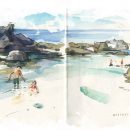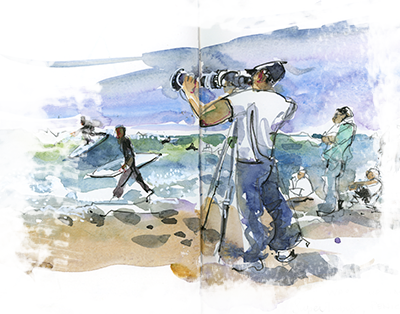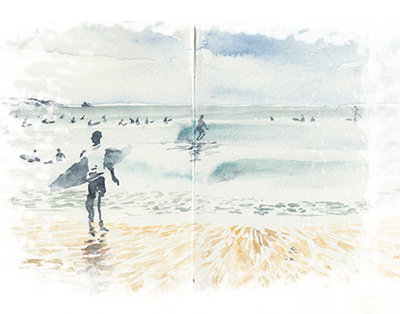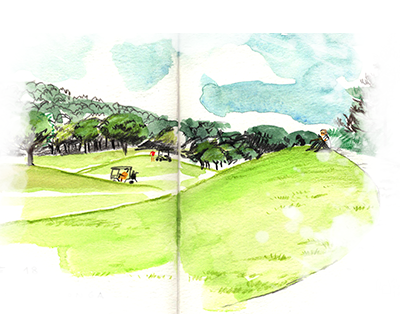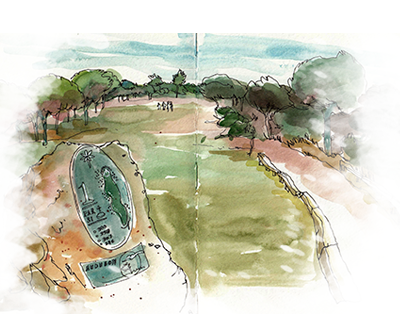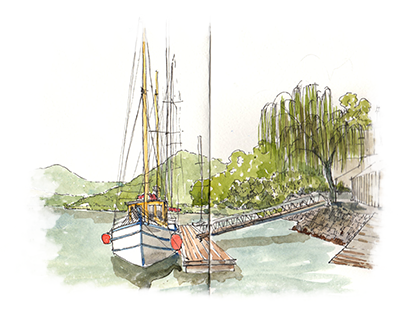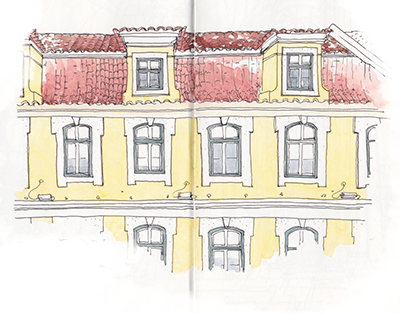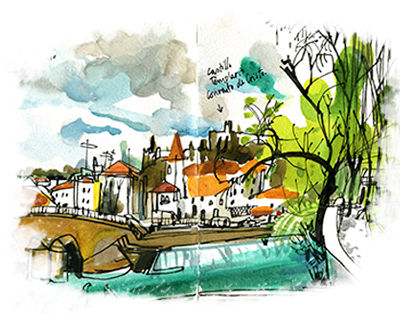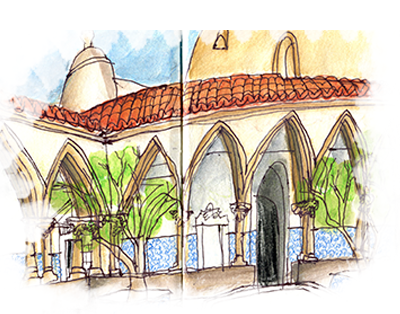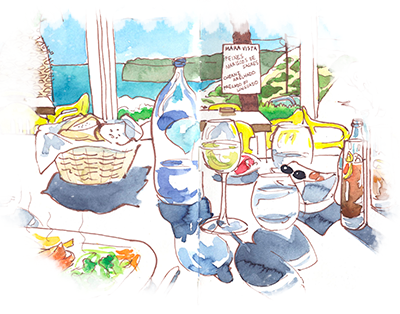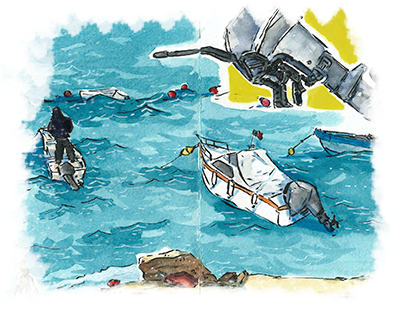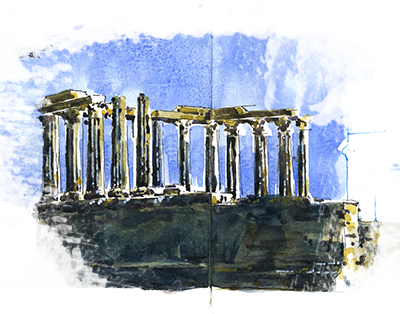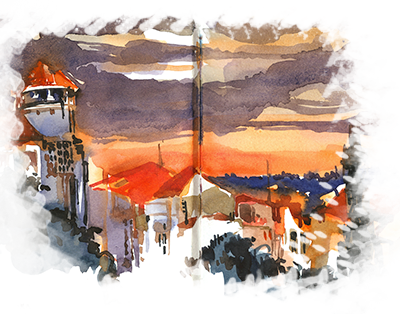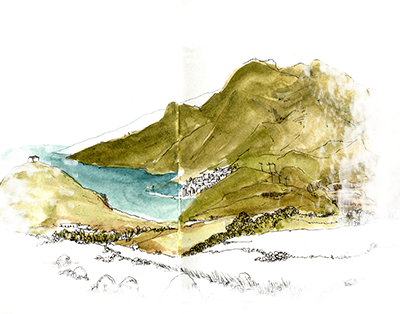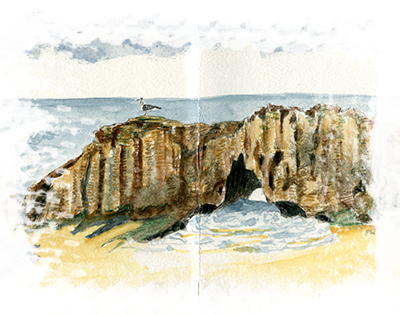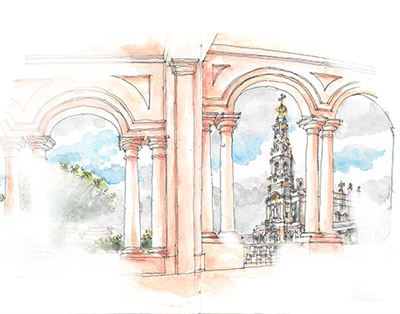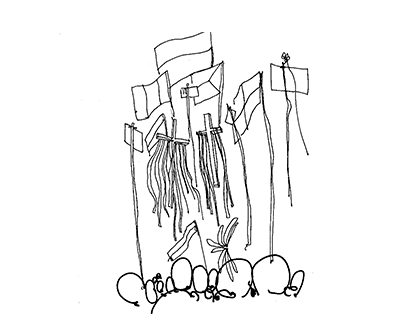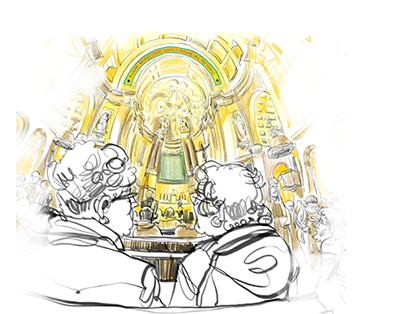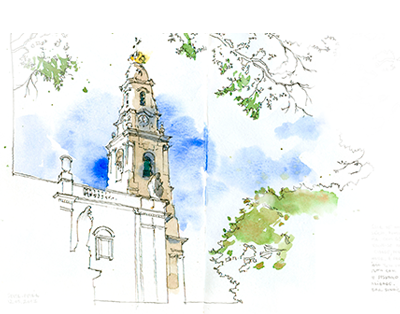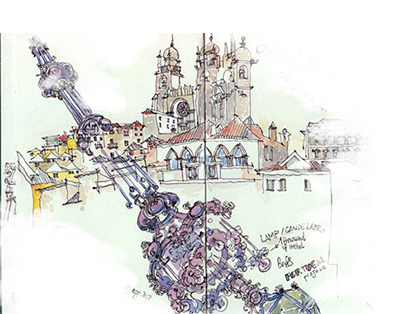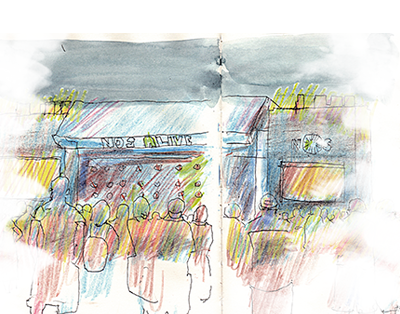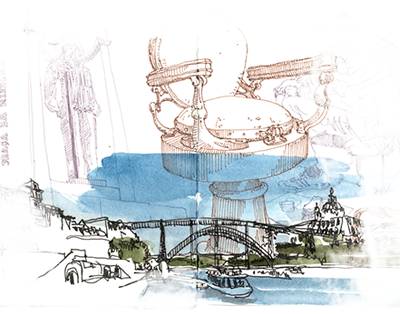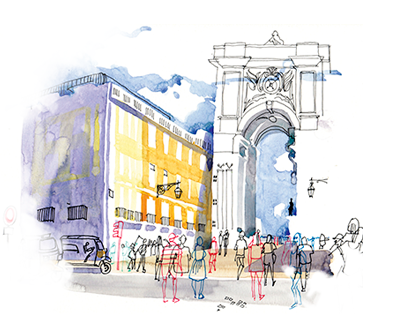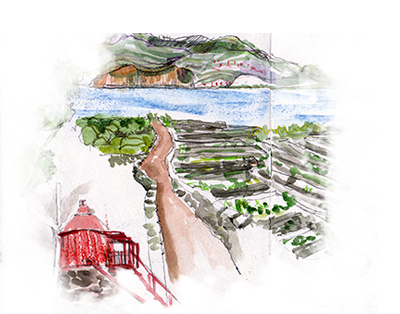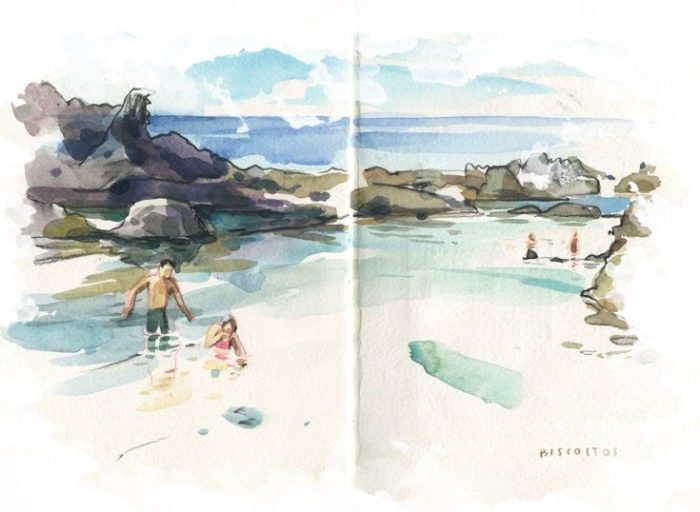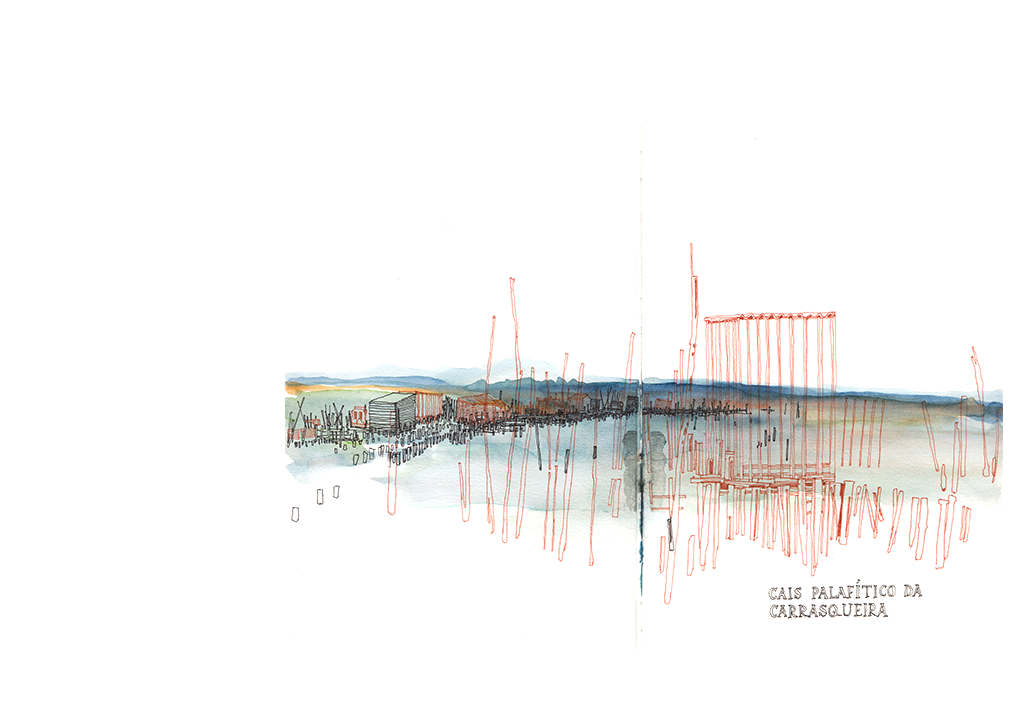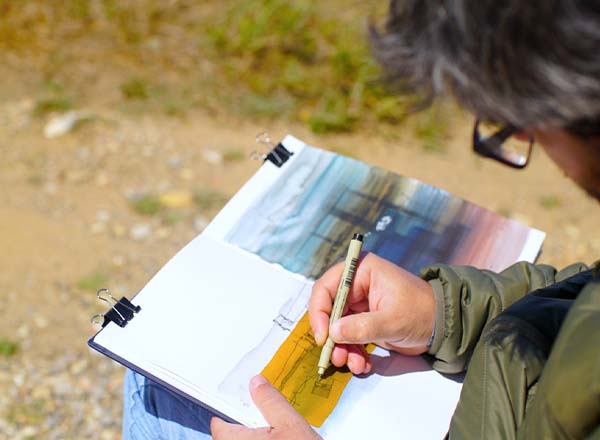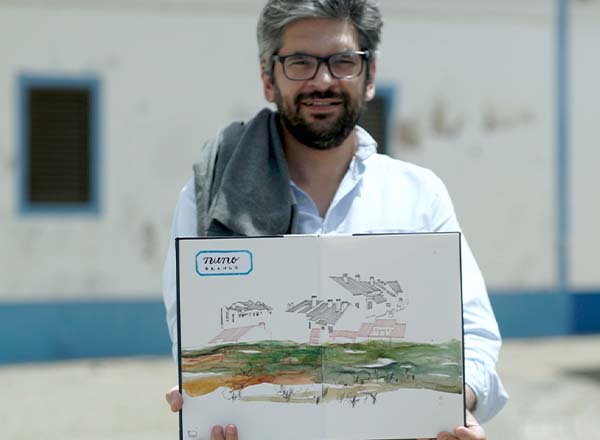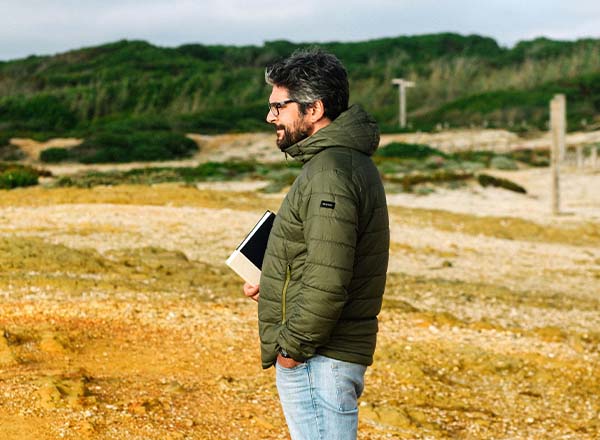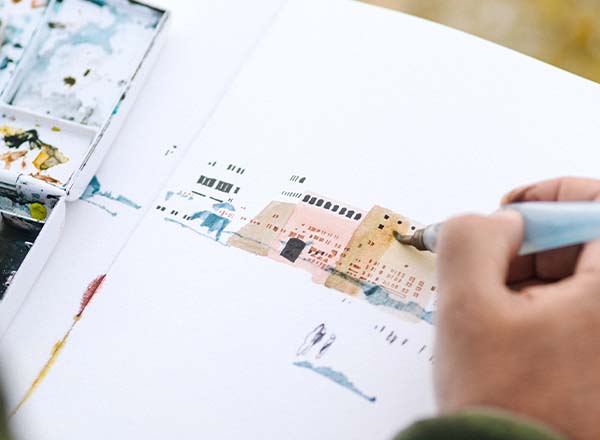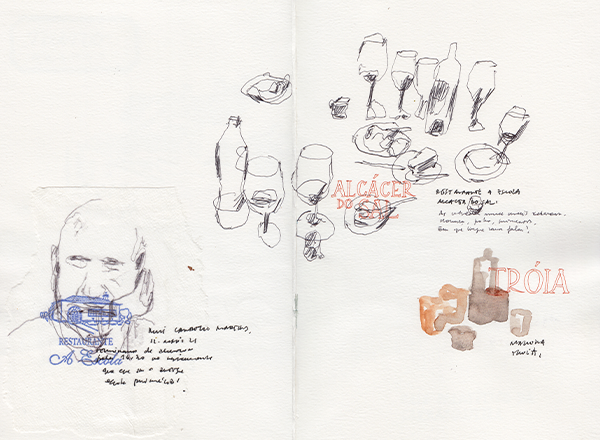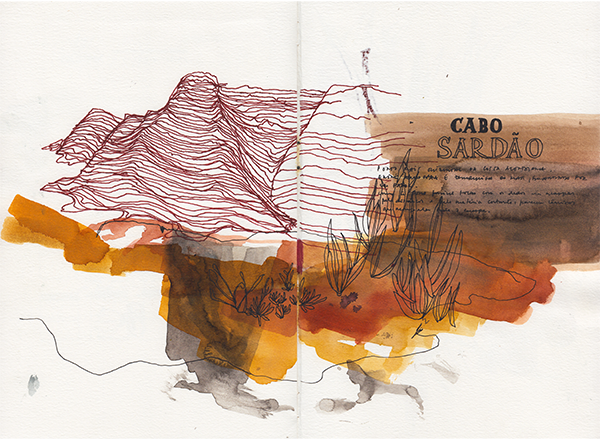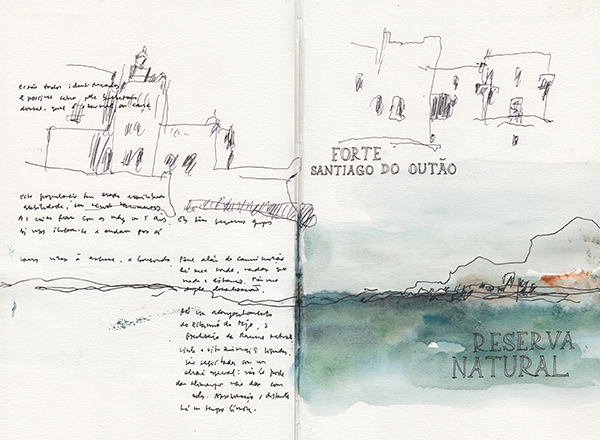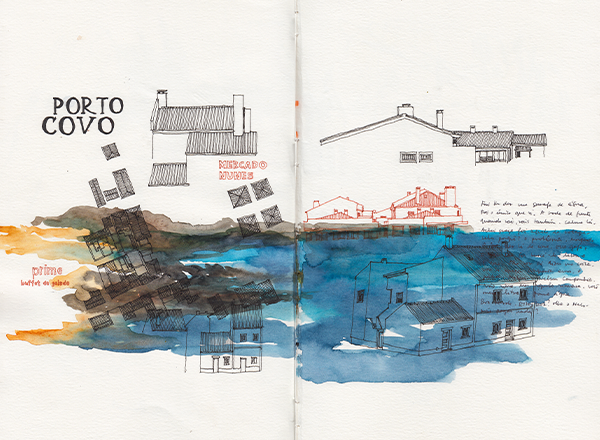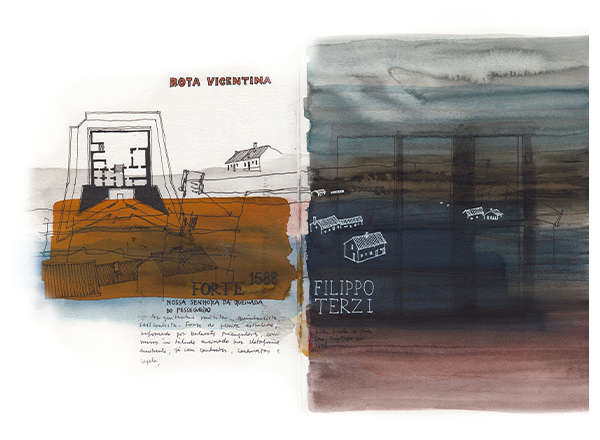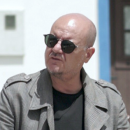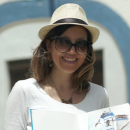Besides being a talented sketcher, Nuno Branco fulfills his mission in life as a Jesuit priest.
Born in Oeiras in 1977 and with a degree in Architecture from the Technical University of Lisbon’s Faculty of Architecture (FAUTL), he joined the Society of Jesus in 2002 and undertook the usual course of studies for a Jesuit: Philosophy, Teaching, and a course in Theology in Madrid specializing in Spirituality and Art in Paris.
He has held meetings and retreats in an attempt to form bridges between Faith and Spirituality. In December 2019, he published “Diário Gráfico: a experiência de Deus na vida diária” (Graphic Diary: experiencing God in everyday life; Frente e Verso publishers).
Nuno Branco’s natural serenity was a perfect fit for the tranquility of the Alentejo.
What surprised you on this journey?
The biggest surprise was precisely the possibility of travelling as I had never done before: without being in a hurry. In other words, not wanting to arrive before schedule. And both the exercise of drawing and the places in the Alentejo are a promising (and demanding) invitation to review my definition of what it means to be a traveller, which could now be “a guest who has learned to be contemplative”.
If you had to tell a child about your journey, what would you say?
Amazement, I think. Revisiting and appreciating with your eyes and hands, with ink and paper, with scribbles and lines, that first tell-tale sign that you are still a child: the joy of amazement.
Was there a particular meal that stuck in your memory?
I recall the dinner at Tasca do Celso in Vila Nova de Milfontes for one simple, yet compelling, reason: everything was perfect for us to enjoy being around the table.
If you had to recommend the Alentejo to friends, what would you say?
Something like this: In the Alentejo, we see in the distance the horizon, the promise of a long silence that brings rest to the gaze and quietness to our words.




